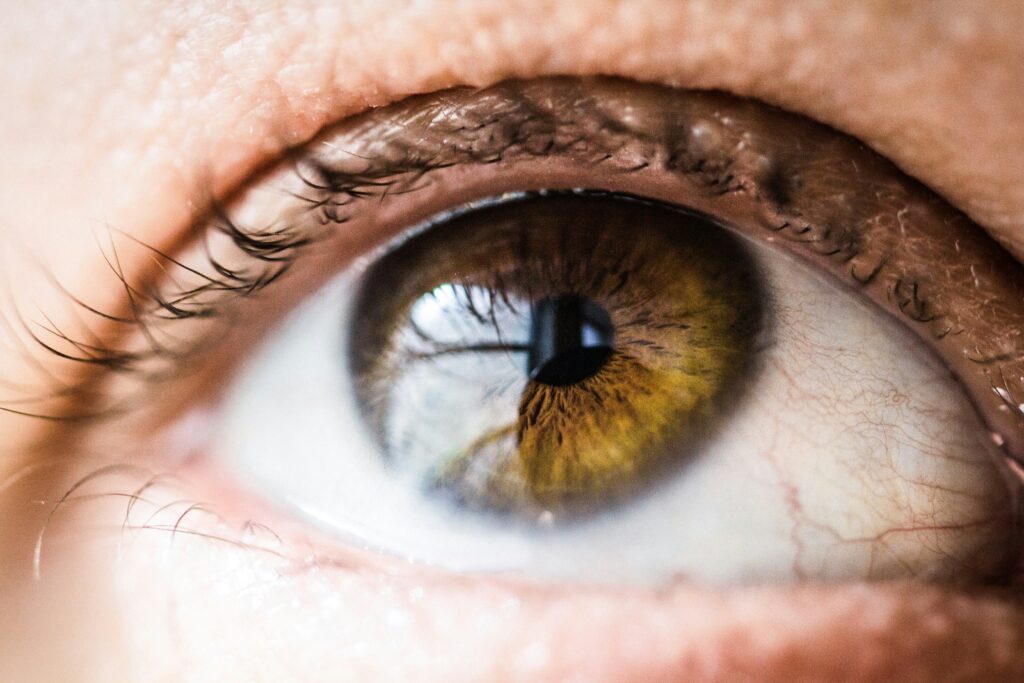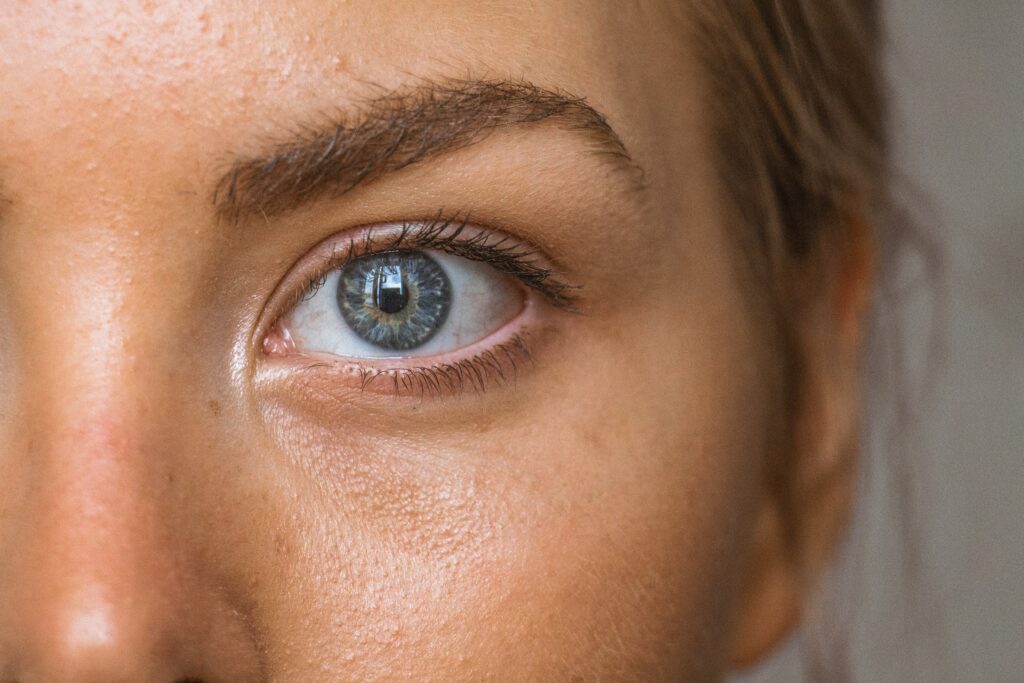Periorbital dark circles or simply, dark circles under the eyes, are among the commonest cosmetic problems across all ages and types of skin.
Although they are not a clinical problem themselves it may be distressing due to their effects on the person’s appearance not only making one look tired but also old and sick.
This piece of writing addresses every aspect of the causes of the periorbital dark circles, treatment measures and prevention methods.
Causative Factors of Periorbital Dark Circles
Periorbital dark circles can result from a number of causes; these are likely differ in an individual’s genetics, habits and health in general. Some of the best reasons for it are:
Genetics: Frequently, dark circles are passed on. They might also just be age factors, younger people may have more supple skin, which means the less visible the blood vessels are.
Aging: With age, the body deteriorates and loses collagen and elastin and the skin tends to grow thinner. Because of this, the blood vessels located beneath the eyes are more organized and hence the appearance of dark circles.
Fatigue: Drowsiness or a complete lack of sleep is probably one of the oldest known reasons for dark circles.
When a person is tired, the skin appears less rosy than it normally does, and as a result, and the blood vessels beneath the surface of skin become more noticeable.
Intolerance: Intolerant reactions such as itching and squeezing of the eye region may cause swelling od colored areas.

Dehydrated Skin: Dehydration is when the body lacks fluid, the skin located beneath the eye may look dry, causing dark circles to be more visible.
Overexposure: Greater exposure to the sun may cause traumatic effects leading to excess melanin being produced further darkening the skin around the eye.
Another contributing Factor: Certain factors such as eating poorly, too much binge drinking, or smoking may enhance the chances of getting darkened eyelid due to thin skin and insufficient blood flow.
All of these dark circles look quite unpleasant, and fortunately, there are several treatment methods to reduce or eliminate them. Depending on the cause and severity of the dark circles, topical treatments, noninvasive procedures and lifestyle interventions may be recommended.
Pharmaceutical Agents:
Eye Creams: Most of the active ingredients help to replenish essential biomolecules that help increases dermal collagen defending the eyelids that lead to the surface epithelium that becomes smooth through curing hyper-pigmented dark circles.
Skin Whitening Agents: Cortocosteroids, hydroquinone, and kojic acid may help in correcting/ lightening the pigmentation especially for cases of dark circles arising from the factors of excessive pigmentation.
Dermal Fillers: For dark circles that arise due to hollowness or atrophy of the skin, dermal fillers, mostly hyaluronic acid derivatives, can be used to boost the area and conceal the shadow.
Laser Therapy: Non invasive laser techniques can help remove hyper pigmentation and increase healthy collagen production which makes the skin healthier and lighter underneath the eyes.
Chemical Peels: There are superficial chemical peel techniques that may include alpha-hydroxy acids (AHAs) for skin restructuring that get rid of dark spots.
Microneedling: This procedure leads to collagen production and enhances skin texture and color, allowing the circles to be less visible.
Platelet-Rich Plasma (PRP): PRP injections are such that promote healing and collagen regeneration, therefore, improving the skin around the eyes.
Preventive Measures
Preventive steps have evident outcomes on the appearance of dark circles; however, not everyone can avoid all the dark circles.
Adequate Sleep: Making sure that you get 7 allowances of night sleep to 9 hours within a day will ensure your dark/circle under the eye will not be caused by fatigue.
Hydration: The skin cells must be hydrated by drinking lots of water.
Sun Protection: Sunscreen and glasses should be applied close to eye areas that are most sensitive to sunlight.
Healthy Diet: Eating plenty of vitamins, antioxidants and other healthy fats for healthy skin.
Management of Allergies: Allergy management is essential for those who suffer from allergies, especially for those who rub their eyes, which may make dark circles worse.
Avoid Smoking and Limit Alcohol: Smoking and drinking too much has a harm to the skin and does not help with dark circles sight.
Dark circles under the eyes have always appeared to be unattractive to most people and are often treatable. They may tend to run in families and/or be partie du pas du tout superficial due to factors such as aging. Many exist which are more oriented towards preventive and or mitigation measures adoption of appropriate skin care routine and lifestyle choices or even medical interventions. If this is the case, seeing a dermatologist or other healthcare provider may be advisable so that you can get the most appropriate treatments for you.
Preparation against Dark Circles Around the Eyes
More infamously known as periorbital, dark circles refer to the deep and circled appearance around the eyes and are a common aesthetic problem.
They may be due to many reasons like genetics, lifestyle habits, or some disease. Even so, they do not pose any health risks, yet their impact can cause anxiety hence the reason as to why most opt for solutions.
As with most conditions, the best way to deal with periorbital dark circles is through prevention. Below are some appropriate measures that help curtail chances of developing or worsening the dark circles.
- Adequate Sleep
The factors contributing predominately to developing dark rings around the eyes is lack of rest. When one does not sleep, their blood flow tends to be poor, and this also increases vascular oedema where blood vessels beneath the skin on the eye periosteum are uppermost and protruding. To counter this:
All you have to do is 7-9 hours of good sleep every night.
Be in the bed and up at the same time, even on the day off from work.
Make sure that the conditions for sleeping are favorable: cold, quiet, dark.
- Proper Hydration
The lack of hydration will also promote the dry and flaky skin of the eyelids and increase the dark circles as well. Constant water intake while working helps the skin to stay moist and prevent losing its elasticity.
As a rule of thumb, at least 8 cups of water should be consumed in a day and more as needed according to activity level and weather conditions.
- Balanced Diet
A skin-friendly diet helps maintain skin conditions and can even prevent dark circles from developing. In particular, pay attention to:
Include Iron-rich foods in diet to avoid anemia with dark circles, greens, legumes and lean meat.
Incorporate Vitamin C and K present in oranges, broccoli, and vegetables to assist in blood flow and capillary walls.
Take in Antioxidants present in berries, and green tea which can help reduce inflammation, which also causes dark circles.
- Sun Protection
It has been shown that engaging in the use of ultraviolet (UV) light may also induce pigmentation, and worsen dark circles too. It is important to protect the skin around the eyes from the sun’s effects:
Use sunscreen daily with SPF of 30 and above. Indoors or on cloudy days, whether there is sun or no sun at all remember to wear sunscreen.
Wear sunglasses with a UV filter and a hat with a wide brim when possible.
Think about eye cream with SPF.
- Gentle Eye Care
The skin around the eyes is thin and sensitive so it is highly likely to be injured by rough treatment:
Do not rub or pull at the eyes when removing make up or cream applied.
With preventative measures, for example, hold to skin norms some basic and residing, apply slight and moisturising eye creams.
Resort to cold compresses or cucumber slices to make eyes feel fresh and lessen swelling.
- Control Allergies
Some common causes of typical dark circles include the inflammation, swelling, and eye rubbing tendencies brought about by allergies, it may be possible to avoid the dark circles. The following measures may help in managing dark circles caused by allergies:
Take antihistamines or allergy medications when they are bothersome.
Change pillow cases daily, buy special non-allergic bedding, or stay away from whatever makes you uncomfortable for the daytime.
Put up a cold press to the areas of swelling due to allergens.
- Quit Smoking and Excessive Alcohol Intake
These two features may speed the process of aging in the skin resulting to the prominence of dark circles. Also, these habits cause dehydrated skin and poor blood flow and thus poor skin condition which is droopy and lifeless.
By restricting or taking these substances out of your day to day activities will help a great deal for the future of the skin elasticity among other good body conditions.
- Professional Help
If even after changing habits the dark circles do not improve, it would be better to visit a professional clinic for advice. The connection might be due to certain diseases like anemia, thyroid dysfunctions as well as nasal health problems.
Some advice about possible conditions and their treatments, which may include different coatings or recesses changes like tattoo or laser out their grievance can be received from a specialist.
Conclusion
Periorbital dark circles exists due to various reasons which can be treated or prevented using healthy lifestyles, appropriate treatments and sun cautions.
That will contribute to avoiding not only dark circles but also improvement of the skin health in general.




eyes opener